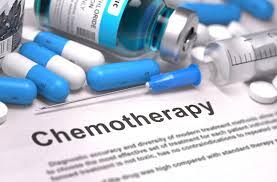- Home
- Editorial
- News
- Practice Guidelines
- Anesthesiology Guidelines
- Cancer Guidelines
- Cardiac Sciences Guidelines
- Critical Care Guidelines
- Dentistry Guidelines
- Dermatology Guidelines
- Diabetes and Endo Guidelines
- Diagnostics Guidelines
- ENT Guidelines
- Featured Practice Guidelines
- Gastroenterology Guidelines
- Geriatrics Guidelines
- Medicine Guidelines
- Nephrology Guidelines
- Neurosciences Guidelines
- Obs and Gynae Guidelines
- Ophthalmology Guidelines
- Orthopaedics Guidelines
- Paediatrics Guidelines
- Psychiatry Guidelines
- Pulmonology Guidelines
- Radiology Guidelines
- Surgery Guidelines
- Urology Guidelines
Blood samples to predict dose of radiation or chemotherapy a patient could withstand

How much radiation or chemotherapy can a certain person handle? With help from blood or tissue testing, it may be possible to answer this question in advance, which in turn could improve treatment, as research at Sahlgrenska Academy shows.
"Although our research is at an early stage and we need to do more studies, the idea is that it will be possible to test sensitivity and prevent extremely sensitive patients from having serious side effects," says Sherin Mathew, a doctoral graduate at the Institute of Biomedicine.
All cancer patients are given roughly the same doses of radiation and chemotherapy, despite the major variation in sensitivity. The extent of the side effects varies from person to person, but at present there are no ways of knowing how each person will be affected.
As a result, some will experience discomfort, while others will suffer much more. The most sensitive patients may experience such severe side effects that they die because of the treatment.
Blood samples may, however, help to identify the most sensitive patients before their treatment begins, which will mean that their dose can be adjusted. While working on her thesis, Sherin Mathew contributed to the development of methods that could be used to establish which patients fall into the "extremely sensitive" category, using lymphocytes from blood samples and so-called dermal fibroblasts, which are found in the dermis.
A special analysis method, flow cytometry analysis, can be used to track the patient's blood cells' ability to divide when they are exposed to radiation and chemotherapy treatment in laboratory conditions. The results may give answers as to how sensitive the individual is to the harmful substances used in the treatment of cancer.
Sometimes it may take weeks or months for side effects to appear, or even years after the cancer treatment before they present themselves. This makes it very difficult to determine which patients are actually most sensitive, even after the treatment has begun, unless they have undergone the tests in question.
"The main idea behind our method is to measure patient sensitivity during the planning process for the cancer treatment and to identify which patients are extremely sensitive. It will be better to have this knowledge about the patients; as it stands right now we don't know how each patient will respond when the radiation or chemotherapy is administered," Sherin Mathew points out.

Disclaimer: This site is primarily intended for healthcare professionals. Any content/information on this website does not replace the advice of medical and/or health professionals and should not be construed as medical/diagnostic advice/endorsement or prescription. Use of this site is subject to our terms of use, privacy policy, advertisement policy. © 2020 Minerva Medical Treatment Pvt Ltd